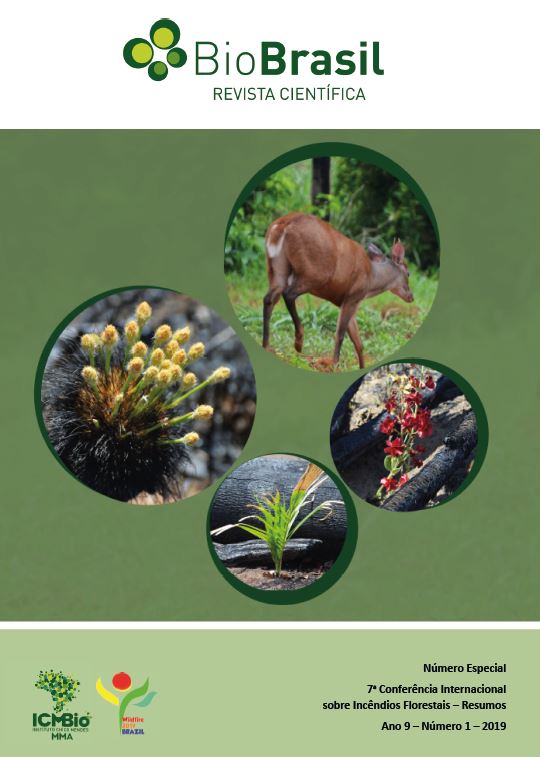Case study of an effective fire protection association in South Africa
DOI:
https://doi.org/10.37002/biodiversidadebrasileira.v9i1.1061Palavras-chave:
Fire, protection, association, voluntary, forestry, agricultureResumo
The South African National Veld and Forest Fire Act, 1998, provides for establishing voluntary fire protection associations. The Lowveld and Escarpment Fire Protection Association (LEFPA), founded in 2000, is 19 years old. It has 1.9 million hectares under its jurisdiction and more than 600 paid-up members owning more than 950,000 hectares. Within its area are four municipalities, 1.7 million people and one of the largest concentrations of high-risk forestry plantations in the country. It borders two countries; Swaziland and Mozambique. Its terrain and vegetation are diverse, ranging from high-lying grassland areas down through a fragmented escarpment to low-lying bushveld savannah areas. As a result, it has four separate weather forecasting regions within it. Its membership falls into four broad categories; forestry plantations, agricultural land, conservation areas and residential areas. Apart from state-owned land, which is required by law to belong and contribute financially, all other landowner membership is voluntary. The staff complement consists of seven salaried staff who are supported and guided by an unpaid board of directors, elected by members. Levies are raised to cover operating costs and the standing fees of aircraft. Annual cost increases have been successfully contained every year to within the inflation index. LEFPA's effectiveness is proven by an overall reduction of fires, as detected by satellite, over the past 10 years. The last catastrophic fires were in 2007 and 2008 and the past 11 years have been characterised by a significant reduction in both number and size of runaway fires. This has been driven by: (a) good, stable management, (b) fire awareness programmes, (c) reliable and accurate weather forecasting provided to members, based on 24 automatic weather stations, (d) the issuing of more than 9,000 burning permits per year for controlled burns, (e) 57 high definition fire detection cameras feeding into two detection centres and detecting more than 24,000 fires per year, (f) one dispatch centre, (g) the supply of thirteen aerial firefighting aircraft operating out of two air bases and 14 private runways. LEFPA has just contracted the first Blackhawk firefighting helicopter in Africa and (h) three ground crews with vehicles.
Downloads
Downloads
Publicado
Edição
Seção
Licença
Copyright (c) 2021 Biodiversidade Brasileira - BioBrasil

Este trabalho está licenciado sob uma licença Creative Commons Attribution-NonCommercial-NoDerivatives 4.0 International License.
Os artigos estão licenciados sob uma licença Creative Commons Atribuição-NãoComercial-SemDerivações 4.0 Internacional (CC BY-NC-ND 4.0). O acesso é livre e gratuito para download e leitura, ou seja, é permitido copiar e redistribuir o material em qualquer mídia ou formato.











